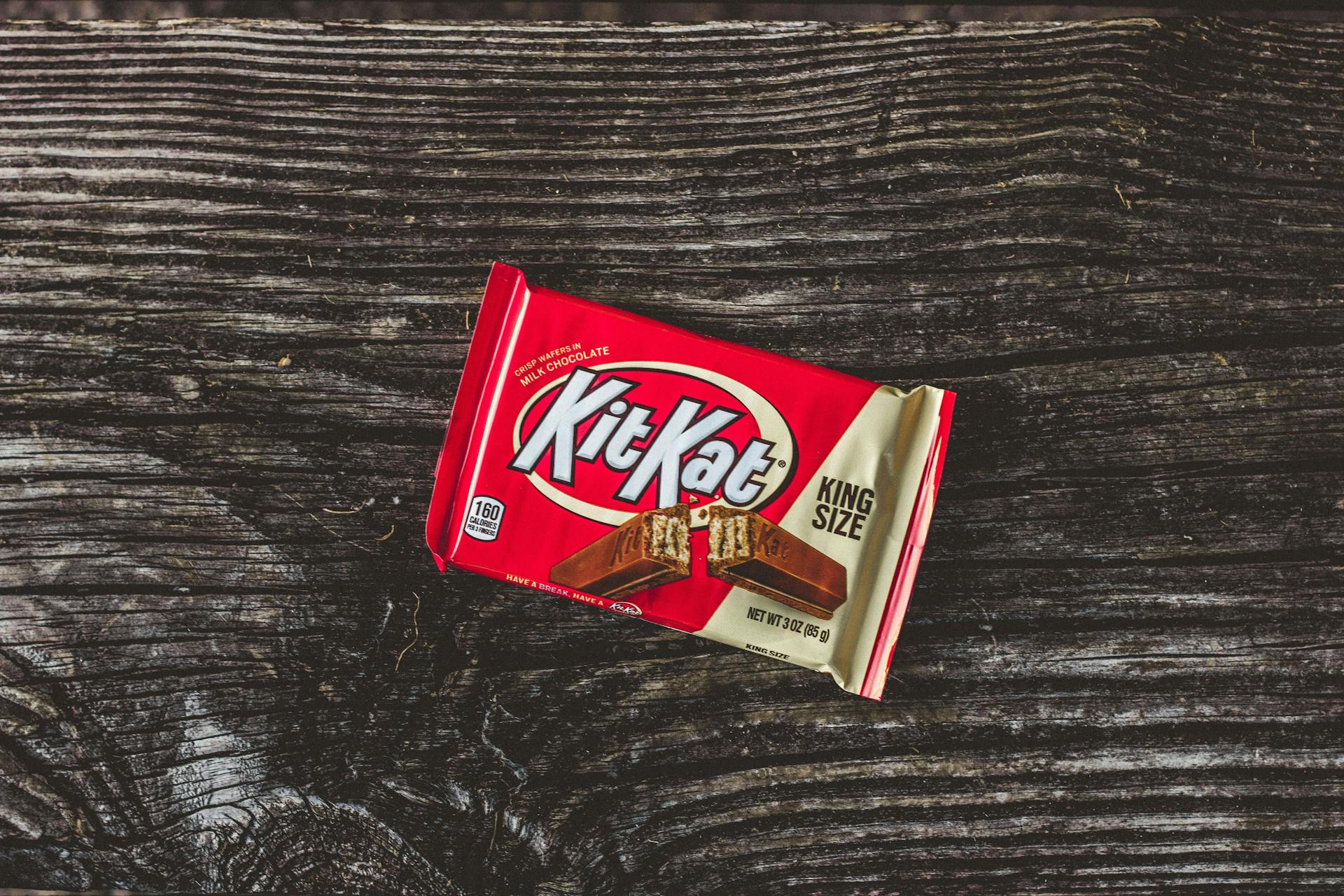- Authors

- Name
- Dr. jur. Urs Verweyen
- Rechtsanwalt Attorney at Law (NY)
Schokoriegel KitKat nicht als Marke eintragungsfähig
, letztes Update:Nestles "KitKat"§-Schokoriegel ist nicht als sog. Formmarke oder 3D-Marke eintragungsfähig. Insb. reicht es für eine EU-Marke nicht aus, wenn eine Form nur in einigen Mitgliedsstaaten der EU durch die Nutzung Unterscheidungskraft erlangt hat (EuGH, U.v. 15. Dezember 2016, Rs. T‑112/13, Mondelez ./. EUIPO, Hervorhebung hier):
"119 According to Article 1(2) of Regulation No 207/2009, the EU trade mark is to have a unitary character, which implies that it is to have equal effect throughout the European Union. It follows from the unitary character of the EU trade mark that, in order to be accepted for registration, a sign must have distinctive character throughout the European Union. Therefore, under Article 7(1)(b) of that regulation, read in conjunction with Article 7(2) thereof, a mark must not be registered if it is devoid of distinctive character in part of the European Union. It has been held that the part of the European Union referred to in Article 7(2) may, where appropriate, be comprised of a single Member State (see, to that effect, judgments of 22 June 2006, Storck v OHIM, C‑25/05 P, EU:C:2006:422, paragraphs 81 to 83; of 29 September 2010, CNH Global v OHIM (Combination of the colours red, black and grey for a tractor), T‑378/07, EU:T:2010:413, paragraph 45; and of 17 May 2011, Diagnostiko kai Therapeftiko Kentro Athinon ‘Ygeia’ v OHIM(υγεία), T‑7/10, not published, EU:T:2011:221, paragraph 40).
120 Article 7(3) of Regulation No 207/2009, which permits registration of signs which have acquired distinctive character through use, must be read in the light of that requirement. Thus, it follows from the unitary character of the EU trade mark that, in order to be accepted for registration, a sign must have distinctive character, whether inherent or acquired through use, throughout the European Union (judgment of 17 May 2011, υγεία, T‑7/10, not published, EU:T:2011:221, paragraph 41).
121 It is apparent from case-law that, in order for the registration of a trade mark to be accepted under Article 7(3) of Regulation No 207/2009, the distinctive character acquired through use of that trade mark must be demonstrated in the part of the European Union where it was devoid of such character under Article 7(1)(b), (c) and (d) of that regulation (judgments of 21 April 2010, Representation of part of a chuck, T‑7/09, not published, EU:T:2010:153, paragraph 40, and of 22 March 2013, Shape of a handbag, T‑409/10, not published, EU:T:2013:148, paragraph 76).
122 In addition, in the case of non-word marks, such as the mark under consideration in the present case, it is appropriate to assume that the assessment of the inherent distinctive character will be the same throughout the European Union, unless there is concrete evidence to the contrary (judgment of 24 February 2016, Coca-Cola v OHIM (Shape of a contour bottle without fluting), T‑411/14, EU:T:2016:94, paragraph 68). As the documents before the Court in the present case do not show that such evidence exists, it must be held that there is an absolute ground for refusal under Article 7(1)(b) of Regulation No 207/2009, with regard to the contested trade mark, throughout the European Union.
123 Given that, in the present case, it had been found that the contested trade mark was devoid of inherent distinctive character in the European Union (paragraph 9 above), that mark must therefore have acquired distinctive character through use throughout the European Union in order to be registrable under Article 7(3) of Regulation No 207/2009 (judgments of 29 April 2004, Eurocermex v OHIM (Shape of a beer bottle), T‑399/02, EU:T:2004:120, paragraph 47; of 10 March 2009, Piccoli v OHIM (Shape of a seashell), T‑8/08, not published, EU:T:2009:63, paragraphs 37 to 39; and of 17 December 2010, Chocoladefabriken Lindt & Sprüngli v OHIM (Shape of a chocolate rabbit), T‑395/08, not published, EU:T:2010:550, paragraph 53).
124 It should be noted that, in the judgment of 24 May 2012, Chocoladefabriken Lindt & Sprüngli v OHIM (C‑98/11 P, EU:C:2012:307), the Court of Justice initially, in paragraph 60, confirmed the settled case-law indicated in paragraph 123 above, according to which the mark must have acquired distinctive character through use throughout the European Union in order to be registrable under Article 7(3) of Regulation No 207/2009. However, subsequently, in paragraph 62 of that judgment, the Court clarified the scope of that requirement when it held that, ‘even if it [was] true ... that the acquisition by a mark of distinctive character through use must be proved for the part of the European Union in which that mark did not, ab initio, have such character, it would be unreasonable to require proof of such acquisition for each individual Member State’.
125 Thus, the criterion to be applied is that of proof that the mark in respect of which registration is sought has acquired distinctive character through use throughout the territory of the European Union, and that acquisition must be ‘sufficiently’ proved in quantitative terms (judgment of 24 May 2012, Chocoladefabriken Lindt & Sprüngli v OHIM, C‑98/11 P, EU:C:2012:307, paragraph 63).
126 In addition, according to case-law, although it must be proved that a mark has acquired distinctive character through use throughout the European Union, the same types of evidence do not have to be provided in respect of each Member State (judgment of 28 October 2009, BCS v OHIM — Deere (Combination of the colours green and yellow), T‑137/08, EU:T:2009:417, paragraph 39).
127 Furthermore, the Court has repeatedly held that there was insufficient proof of distinctive character acquired through use of a mark throughout the European Union where evidence was missing for certain Member States (judgments of 8 July 2009, Mars v OHIM — Ludwig Schokolade (Shape of a chocolate bar), T‑28/08, not published, EU:T:2009:253; of 30 September 2009, JOOP! v OHIM (!), T‑75/08, not published, EU:T:2009:374; and of 24 February 2016, Shape of a contour bottle without fluting, T‑411/14, EU:T:2016:94, paragraph 80).
128 In particular, in the judgment of 21 April 2015, Louis Vuitton Malletier v OHIM — Nanu-Nana (Representation of a grey chequerboard pattern) (T‑360/12, not published, EU:T:2015:214), while relying on the case-law developed in the judgment of 24 May 2012, Chocoladefabriken Lindt & Sprüngli v OHIM (C‑98/11 P, EU:C:2012:307), according to which it would be unreasonable to require proof of acquisition of distinctive character through use for each Member State, the Court considered that, since such acquisition had not been established for 12 of the 27 Member States constituting the European Union at the date of filing the application for registration of the mark in question, that mark could not be regarded as having acquired distinctive character through use throughout the European Union (see, to that effect, judgment of 21 April 2015, Representation of a grey chequerboard pattern, T‑360/12, not published, EU:T:2015:214, paragraphs 92, 93, 117 and 120).
129 Similarly, in paragraph 49 of the judgment of 16 March 2016, Työhönvalmennus Valma v OHIM (Shape of a game box with wooden blocks) (T‑363/15, not published, EU:T:2016:149), the Court considered, in essence, that proof of acquisition, by a trade mark, of distinctive character through use had not been adduced for the whole of the European Union, given that relevant evidence had been adduced in relation to only 4 of the 28 Member States concerned.
130 It is necessary to examine, in the light of the foregoing, whether the Board of Appeal correctly assessed whether distinctive character acquired through use of the contested trade mark throughout the European Union was sufficiently proved in quantitative terms by the intervener.
131 At the outset, it must be stated that, under Article 165(1) and (4) of Regulation No 207/2009, evidence of distinctive character acquired through use must be produced only for the States that were members of the European Union at the date of filing the application for registration of the contested trade mark, namely in the present case, the Union composed, as at 21 March 2002, of 15 Member States, as was correctly observed by the Board of Appeal in paragraph 59 of the contested decision.
132 Therefore, the applicant’s line of argument that, should the distinctive character acquired through use of the contested trade mark be confirmed, the intervener will acquire a very broad monopoly in 28 Member States even though it has established that distinctive character only in a much smaller number of Member States, cannot succeed.
...
139 Indeed, as is apparent from the case-law cited in paragraphs 119 to 121 above, for the purposes of applying Article 7(3) of Regulation No 207/2009, in the case of a mark which does not have inherent distinctive character throughout the European Union, the distinctive character acquired through use of that mark must be shown throughout the territory of the European Union, and not only for a substantial part or the majority thereof. Furthermore, although, as was held by the Court of Justice in the judgment of 24 May 2012, Chocoladefabriken Lindt & Sprüngli v OHIM (C‑98/11 P, EU:C:2012:307, paragraph 62), there cannot be a requirement for proof of distinctive character acquired through use of that mark to be adduced for each individual Member State concerned, such proof may be adduced globally for all the Member States concerned or separately for different Member States or groups of Member States. Consequently, in the event that the evidence submitted does not cover part of the European Union, even a part which is not substantial or consists of only one Member State, it cannot be concluded that distinctive character has been acquired through use of the mark throughout the European Union.
...
141 The Board of Appeal considered, in essence, that it was sufficient to show that a significant proportion of the relevant public throughout the European Union, merging all the Member States and regions, perceived a mark as an indication of the commercial origin of the goods designated by that mark.
142 However, that criterion is incorrect: the relevant question is not whether it was shown that a substantial proportion of the public in the European Union, merging all the Member States and regions, perceived a mark as an indication of the commercial origin of the goods designated by that mark, but whether, throughout the European Union, it was proved that a significant proportion of the relevant public perceived a mark as an indication of the commercial origin of the goods designated by that mark. A lack of recognition of the sign as an indication of commercial origin in one part of the territory of the European Union cannot be offset by a higher level of awareness in another part of the European Union.
...
175 As has been stated in paragraph 139 above, in the case of a mark which, like the contested trade mark, does not have inherent distinctive character throughout the European Union, the distinctive character acquired through use of that mark must be shown throughout the territory of the European Union, that is, in all the Member States concerned."
